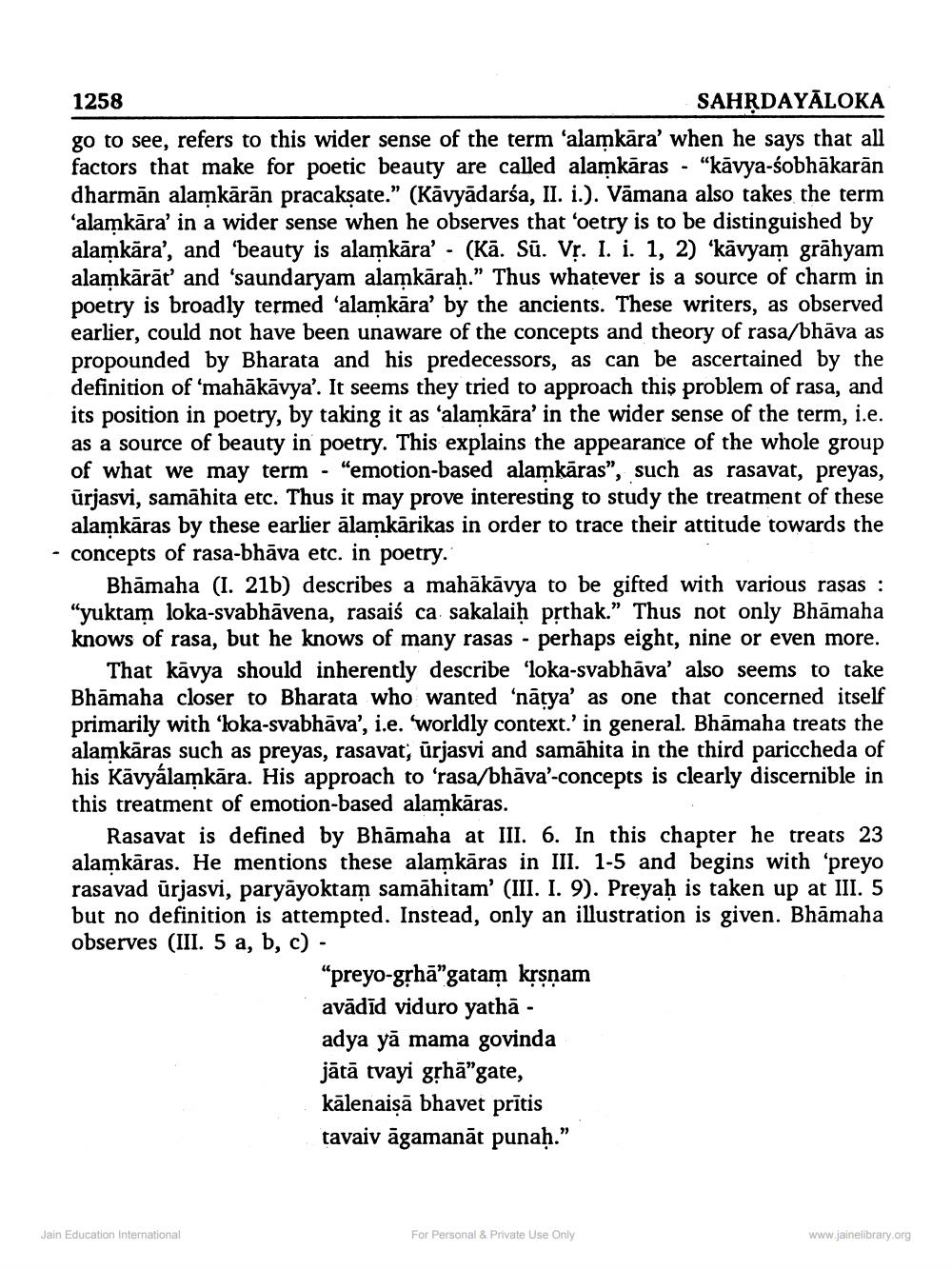________________
1258
SAHRDAYĀLOKA go to see, refers to this wider sense of the term 'alamkāra' when he says that all factors that make for poetic beauty are called alamkāras - "kavya-sobhākarān dharmān alamkārān pracaksate.” (Kavyādarśa, II. i.). Vāmana also takes the term 'alamkāra' in a wider sense when he observes that 'oetry is to be distinguished by alamkara', and 'beauty is alamkāra' - (Kā. Sū. Vr. I. i. 1, 2) kavyam grāhyam alamkārāt' and 'saundaryam alamkārah.” Thus whatever is a source of charm in poetry is broadly termed 'alamkāra' by the ancients. These writers, as observed earlier, could not have been unaware of the concepts and theory of rasa/bhāva as propounded by Bharata and his predecessors, as can be ascertained by the definition of 'mahākāvya'. It seems they tried to approach this problem of rasa, and its position in poetry, by taking it as 'alamkāra' in the wider sense of the term, i.e. as a source of beauty in poetry. This explains the appearance of the whole group of what we may term - "emotion-based alamkāras", such as rasavat, preyas, ūrjasvi, samāhita etc. Thus it may prove interesting to study the treatment of these
alamkāras by these earlier alamkārikas in order to trace their attitude towards the - concepts of rasa-bhāva etc. in poetry.
Bhāmaha (I. 21b) describes a mahākāvya to be gifted with various rasas : "yuktam loka-svabhāvena, rasaiś ca sakalaiḥ prthak.” Thus not only Bhāmaha knows of rasa, but he knows of many rasas - perhaps eight, nine or even more.
That kāvya should inherently describe 'loka-svabhāva' also seems to take Bhāmaha closer to Bharata who wanted 'nātya' as one that concerned itself primarily with 'loka-svabhāva', i.e. 'worldly context.' in general. Bhāmaha treats the alamkāras such as preyas, rasavat; ürjasvi and samāhita in the third pariccheda of his Kävyálamkāra. His approach to 'rasa/bhāva'-concepts is clearly discernible in this treatment of emotion-based alamkāras.
Rasavat is defined by Bhāmaha at III. 6. In this chapter he treats 23 alamkāras. He mentions these alamkāras in III. 1-5 and begins with 'preyo rasavad ürjasvi, paryāyoktam samāhitam' (III. I. 9). Preyaḥ is taken up at III. 5 but no definition is attempted. Instead, only an illustration is given. Bhāmaha observes (III. 5 a, b, c) -
“preyo-gļhā”gatam krşņam avādīd viduro yathā - adya ya mama govinda jātā tvayi grha"gate, kālenaisā bhavet prītis tavaiv āgamanāt punah.”
Jain Education International
For Personal & Private Use Only
www.jainelibrary.org




